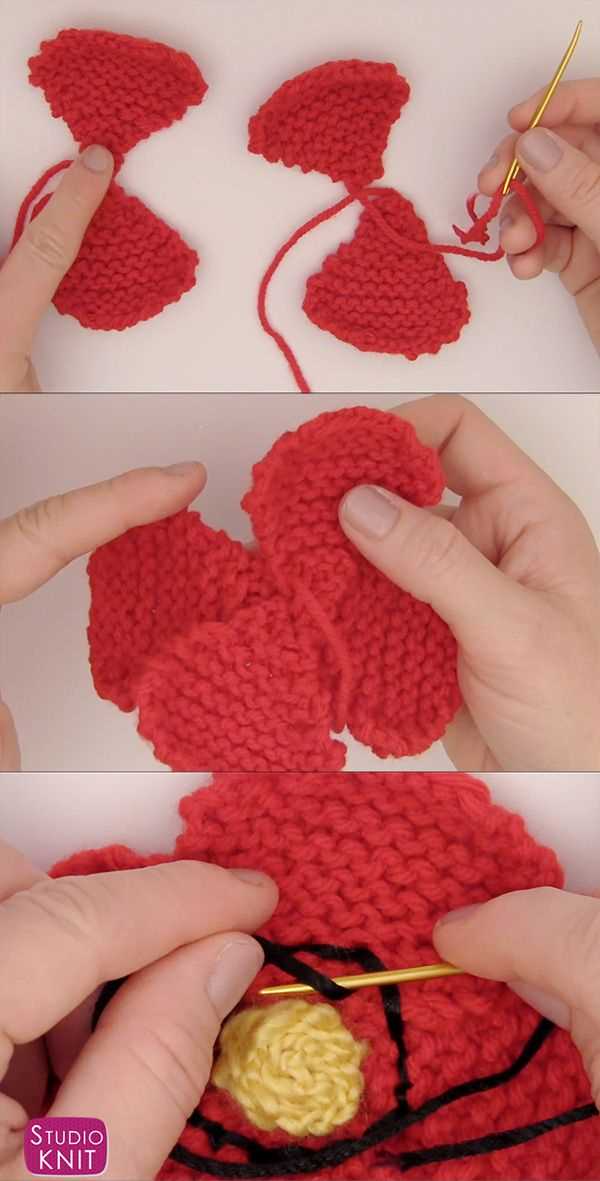
Fall is the perfect time to show your support for veterans and the armed forces by wearing a poppy. This traditional symbol has deep roots and has become synonymous with remembrance and honoring those who have sacrificed so much for their countries. If you’re looking for a unique and handmade way to wear a poppy this year, why not try knitting your own? These easy knitted poppy patterns are a great way to get started with knitting and add a personal touch to your poppy accessory.
Knitting your own poppies allows you to customize the size, color, and style to match your personal taste. Whether you prefer a traditional red poppy or want to experiment with different colors and designs, there’s a pattern out there for you. Plus, knitting is a relaxing and therapeutic hobby that can help reduce stress and improve mental well-being. Why not take some time for yourself and create something beautiful that also carries a meaningful message?
If you’re new to knitting, don’t worry – these easy poppy patterns are perfect for beginners. They usually involve simple stitches and techniques that are easy to master. You can start with a basic flat-petal design and gradually progress to more complex variations as you gain confidence and skill. There are also plenty of online tutorials and videos available to guide you through the process, making it even easier to create your poppy masterpiece.
So, why not pick up some knitting needles and give these easy knitted poppy patterns a try? Not only will you be creating a beautiful accessory, but you’ll also be showing your support and gratitude to those who have served. Wear your poppy with pride and let it serve as a reminder of the courage and sacrifice made by so many. Happy knitting!
Why knit poppies?
Knitting poppies is a meaningful way to pay homage to those who have served or fallen in war. The poppy has long been a symbol of remembrance and is worn around the world to honor the sacrifices made by military personnel.
Knitting poppies allows individuals to actively participate in the act of remembrance and show their support for veterans. It is a way to express gratitude and appreciation for those who have bravely served their countries.
Knitting poppies also serves as a form of therapy and healing for individuals who may have been directly impacted by war or have loved ones who have served. The act of knitting can be calming and meditative, providing a sense of peace and mindfulness. By channeling their emotions into creating poppies, individuals can find solace and a sense of purpose.
In addition, knitting poppies offers a creative outlet for individuals who enjoy knitting or crafts. It provides an opportunity to practice new techniques and experiment with different yarns and patterns. Moreover, the finished poppies can be used in various ways, such as accessories, decorations, or even as gifts.
To create a knitted poppy is to contribute to a collective symbol of remembrance. It helps maintain the tradition of wearing poppies and ensures that the sacrifices made by military personnel are never forgotten. Knitting poppies is a way to honor the past, support the present, and remember the future.
Materials needed for knitting poppies
In order to knit poppies, you will need a few essential materials. These materials will help you create beautiful and meaningful poppy flowers that can be used for various purposes, such as honoring veterans or decorating your home.
1. Yarn: The most important material for knitting poppies is yarn. You will need red yarn to create the petals of the poppy flower. It is recommended to use a medium weight yarn that is soft and easy to work with. This will ensure that your poppies have a nice texture and are comfortable to wear or touch.
2. Knitting Needles: To work with the yarn, you will need a pair of knitting needles. The size of the needles will depend on the thickness of the yarn you are using. Make sure to choose the correct size of needles to achieve the desired tension and stitch definition in your knitting.
- 3. Crochet Hook: In addition to knitting needles, you will also need a crochet hook. The crochet hook is used to create the center of the poppy flower and to attach the petals to the center. It is recommended to use a crochet hook that matches the size of your knitting needles.
- 4. Scissors: A pair of sharp scissors is essential for cutting the yarn. You will need to cut the yarn at various points during the knitting process, so having a good pair of scissors will make the process easier and more efficient.
- 5. Tapestry Needle: A tapestry needle is used for weaving in loose yarn ends and for sewing the poppy together. It is important to choose a tapestry needle with a large enough eye to easily thread the yarn.
- 6. Stuffing: If you are planning to create poppy flowers that have a 3-dimensional shape, you will need some stuffing material. This can be polyester fiberfill or any other soft and pliable material that can be easily inserted into the center of the poppy.
Basic knitting techniques for poppies
Knitting poppies can be a meaningful and rewarding project for both beginners and experienced knitters. To create beautiful knitted poppies, it’s important to have a good understanding of basic knitting techniques. Here are some key techniques to keep in mind:
1. Casting on:
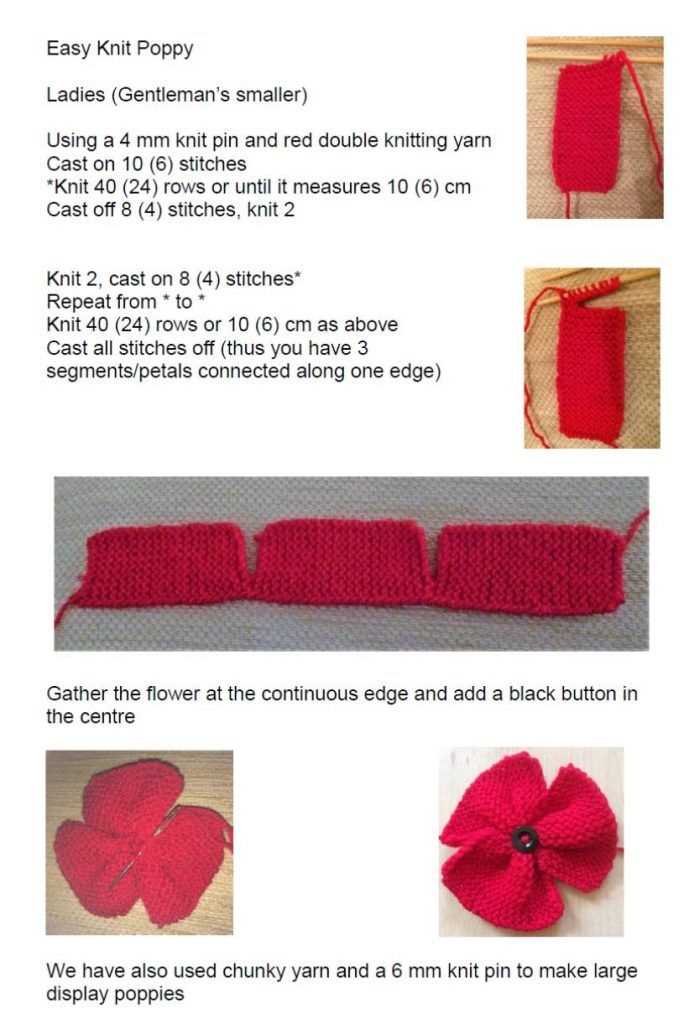
To start knitting your poppy, you will need to cast on stitches. The number of stitches you cast on will depend on the size of your poppy and the yarn you are using. Use the long-tail cast-on method to create a neat and stretchy edge for your poppy.
2. Knit stitch:
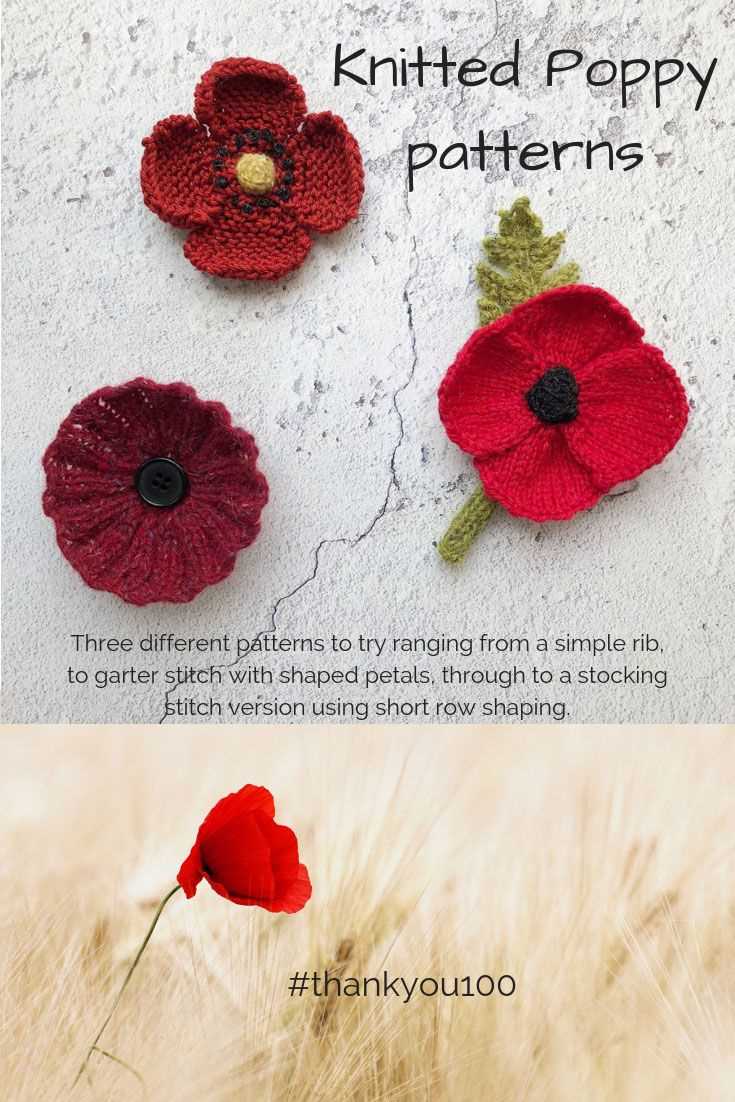
The knit stitch is one of the most basic and essential stitches in knitting. It creates a smooth and even fabric that is perfect for creating the petals of the poppy. Hold your knitting needles in your hands, insert the right needle into the first stitch on the left needle, and bring the yarn over the right needle. Pull the yarn through the stitch to create a loop on the right needle and slip the original stitch off the left needle. Repeat this process for each stitch until you have completed a row.
3. Purl stitch:
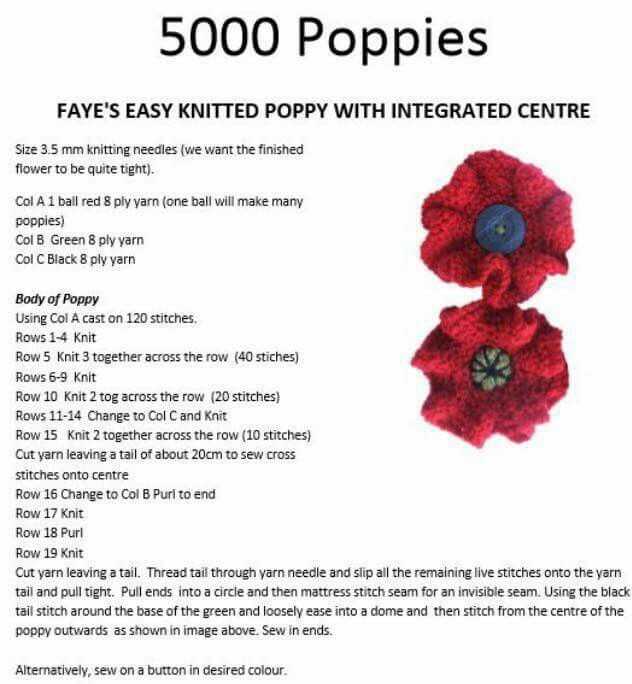
The purl stitch is another basic stitch that is commonly used in knitting. It creates a textured fabric that can add depth and interest to your poppy petals. To purl, hold the knitting needles in your hands, insert the right needle into the first stitch on the left needle from right to left, and bring the yarn under the right needle. Pull the yarn through the stitch to create a loop on the right needle and slip the original stitch off the left needle. Repeat this process for each stitch until you have completed a row.
4. Increasing and decreasing:
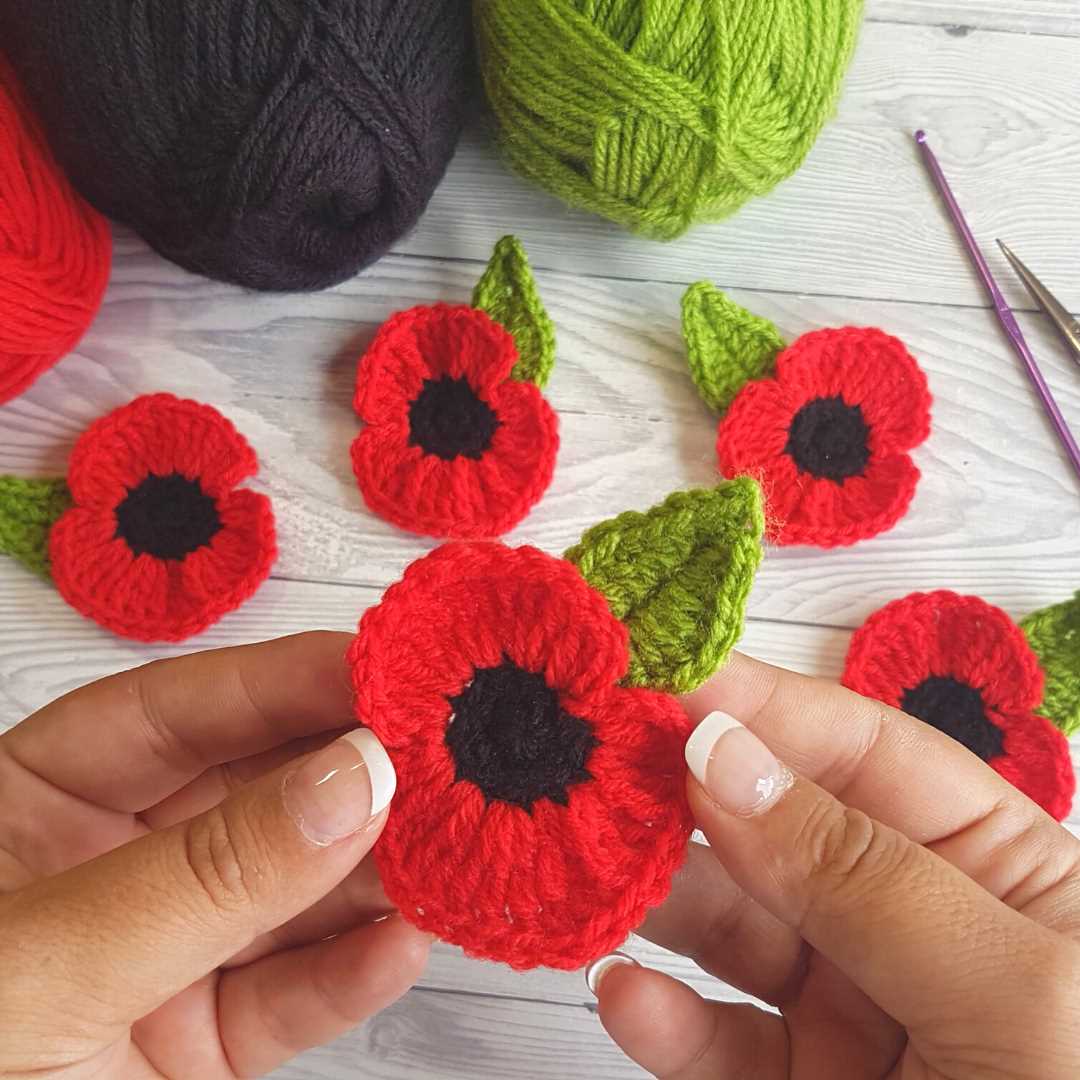
To shape the petals of your knitted poppy, you will need to know how to increase and decrease stitches. Increasing involves adding stitches to make the fabric wider, while decreasing involves reducing stitches to make the fabric narrower. Common increase stitches include knit front and back (KFB) and make one (M1), while common decrease stitches include knit two together (K2Tog) and slip, knit, pass (SKP). Experiment with different increase and decrease methods to create the desired shape for your poppy petals.
By mastering these basic knitting techniques, you will be able to create beautiful and realistic knitted poppies. Remember to practice and be patient as you learn, and soon you’ll have a stunning poppy to display or give as a thoughtful gift.
Simple Knitted Poppy Pattern for Beginners
If you are new to knitting and want to try your hand at making a poppy, this simple knitted poppy pattern is perfect for beginners. With just a few basic stitches, you can create a beautiful poppy to wear or display.
Materials Needed:
- Red yarn
- Green yarn
- Knitting needles (size 8 or as preferred)
- Tapestry needle
- Scissors
Instructions:
- Cast on 60 stitches using red yarn.
- Knit every row for about 2 inches or desired length.
- Switch to green yarn and knit 5 rows.
- Switch back to red yarn and knit 5 rows.
- Bind off all stitches.
- Using a tapestry needle and red yarn, sew a running stitch along one edge of the knitted rectangle.
- Gently pull the yarn to gather the fabric and form a petal shape.
- Tie a knot to secure the gathered fabric.
- Repeat the previous steps on the other edge of the knitted rectangle to create more petals.
- Trim any excess yarn, making sure the knot is secure.
- Your knitted poppy is now complete!
This simple knitted poppy pattern is a great way for beginners to practice their knitting skills while creating something beautiful. Once you have mastered this pattern, you can experiment with different yarn colors and sizes to create a variety of poppies. Whether you wear your poppy as a brooch, attach it to a hat, or use it as a decorative item, it is sure to add a touch of beauty to any outfit or space.
Intermediate knitted poppy pattern
For those looking to take their knitting skills up a notch, an intermediate knitted poppy pattern offers a challenge while still being achievable for experienced knitters. This pattern requires a solid understanding of basic knitting techniques, such as casting on, knitting, purling, increasing, and decreasing stitches.
To create an intermediate knitted poppy, start by casting on the desired number of stitches with a medium weight yarn in red or poppy color. Using a set of double-pointed or circular knitting needles, start with a few rounds of knit stitches to create the base of the flower.
Materials needed:
- Medium weight yarn in red or poppy color
- Size 8 knitting needles
- Set of double-pointed or circular knitting needles
- Tapestry needle
- Stitch markers (optional)
Continue to follow the pattern instructions, which may involve using different stitch patterns, such as ribbing or lace, to create the petals of the poppy. The pattern may also require using different colors of yarn to create contrasting details.
As you work through the pattern, pay close attention to any special instructions, such as wrapping stitches or working yarn overs, to create the desired texture and shape for your knitted poppy. Take your time and refer to knitting resources or tutorials if needed.
Once you have completed all the pattern instructions, finish off your knitted poppy by cutting the yarn and threading it through the final stitches to secure them. Use a tapestry needle to weave in any loose ends.
Whether you plan to wear your knitted poppy as a pin or use it as a decorative accent, an intermediate knitted poppy pattern is a great way to challenge your knitting skills and create a beautiful flower design.
Advanced knitted poppy pattern with multiple petals
When it comes to knitting poppies, there are many different patterns to choose from. One advanced pattern that creates a stunning effect is the multiple petal design. This pattern requires a higher level of skill and patience, but the end result is truly worth the effort.
To create the multiple petal design, you will need to cast on a larger number of stitches compared to a basic poppy pattern. This will allow you to create more petals and achieve a fuller and more textured look. Additionally, you will need to work with multiple colors of yarn to create the contrasting petals, which adds an extra level of complexity to the pattern.
The multiple petal design typically involves knitting each petal individually and then joining them together to form the flower. This requires careful attention to detail and precision to ensure that each petal is aligned correctly. You may need to refer to a chart or written instructions to keep track of which stitch belongs to which petal.
Overall, the advanced knitted poppy pattern with multiple petals offers a beautiful and intricate design. It is perfect for experienced knitters looking to challenge themselves and create a unique and eye-catching poppy. Whether you decide to use this pattern for a brooch, pin, or as a decorative element, it is sure to make a statement and impress those who see it.
Tips for choosing yarn colors for poppies
When knitting poppies, one of the most important considerations is choosing the right yarn colors. The colors you choose can greatly impact the final look and feel of your poppies, so it’s important to choose wisely. Here are some tips to help you select the perfect yarn colors for your poppy project.
Consider the natural colors of poppies
Poppy flowers come in a variety of colors, including red, orange, pink, and white. When choosing yarn colors, it’s a good idea to take inspiration from the natural colors of poppies. Consider using shades of red or orange to create a realistic-looking poppy. Alternatively, you can get creative and use other colors like pink or white to add a unique twist to your poppies.
Think about the purpose of your poppies
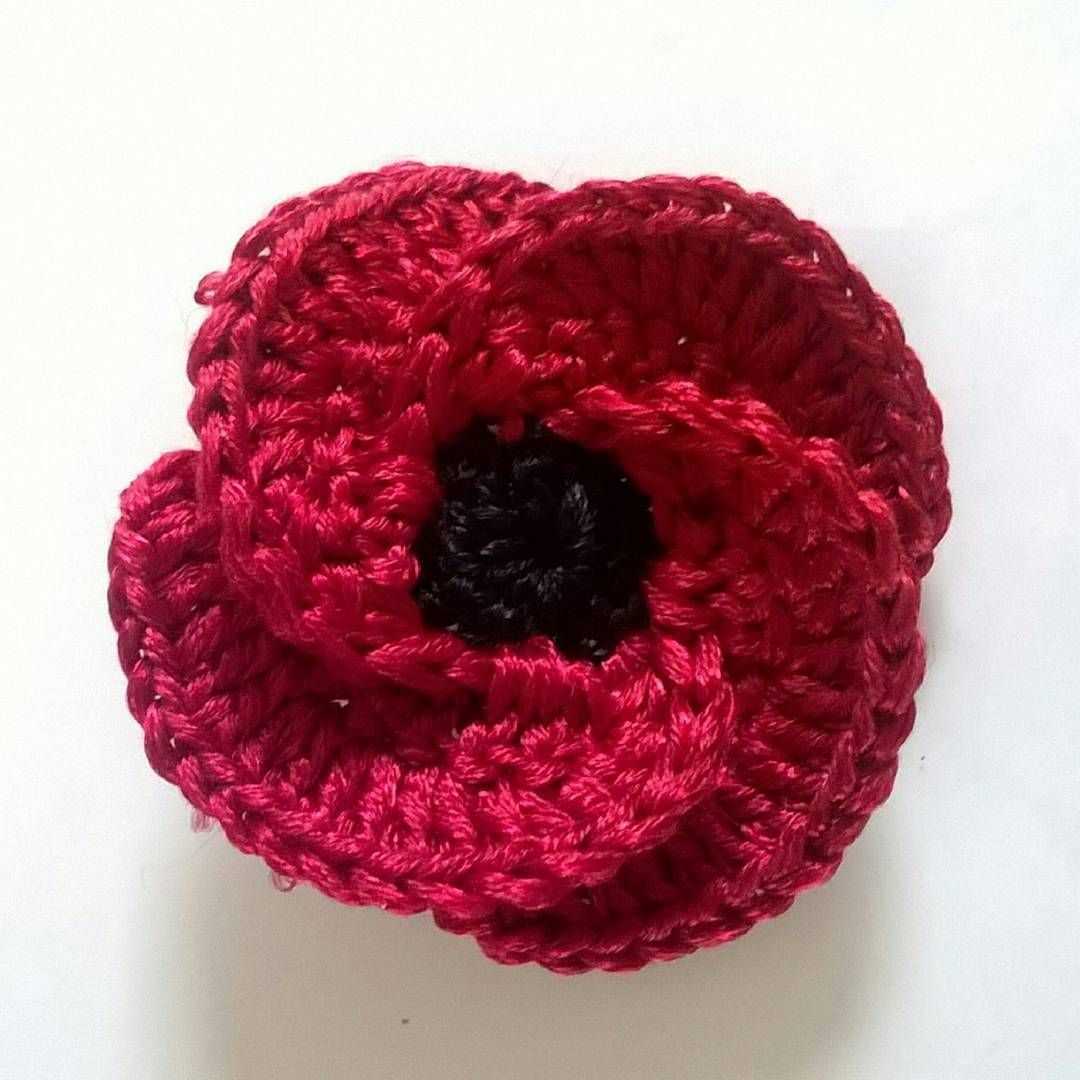
Another factor to consider when choosing yarn colors for poppies is the purpose of your project. Are you knitting poppies to create a wreath or a bouquet? Or maybe you’re making poppies as embellishments for an outfit or accessory. The purpose of your project can influence the color choices. For example, if you’re creating a wreath, you might want to use different shades of red to mimic the appearance of real poppies. If you’re making poppy embellishments, you might choose colors that complement or contrast with the item you’re adding them to.
Experiment with different color combinations
Don’t be afraid to get creative and experiment with different color combinations for your poppies. Mixing different shades of red, orange, and pink can create a beautiful ombre effect. You can also try combining complementary colors or using variegated yarn for a more unique and visually interesting look. Remember, knitting poppies is a great opportunity to play with colors and let your creativity shine!
Consider the overall aesthetic
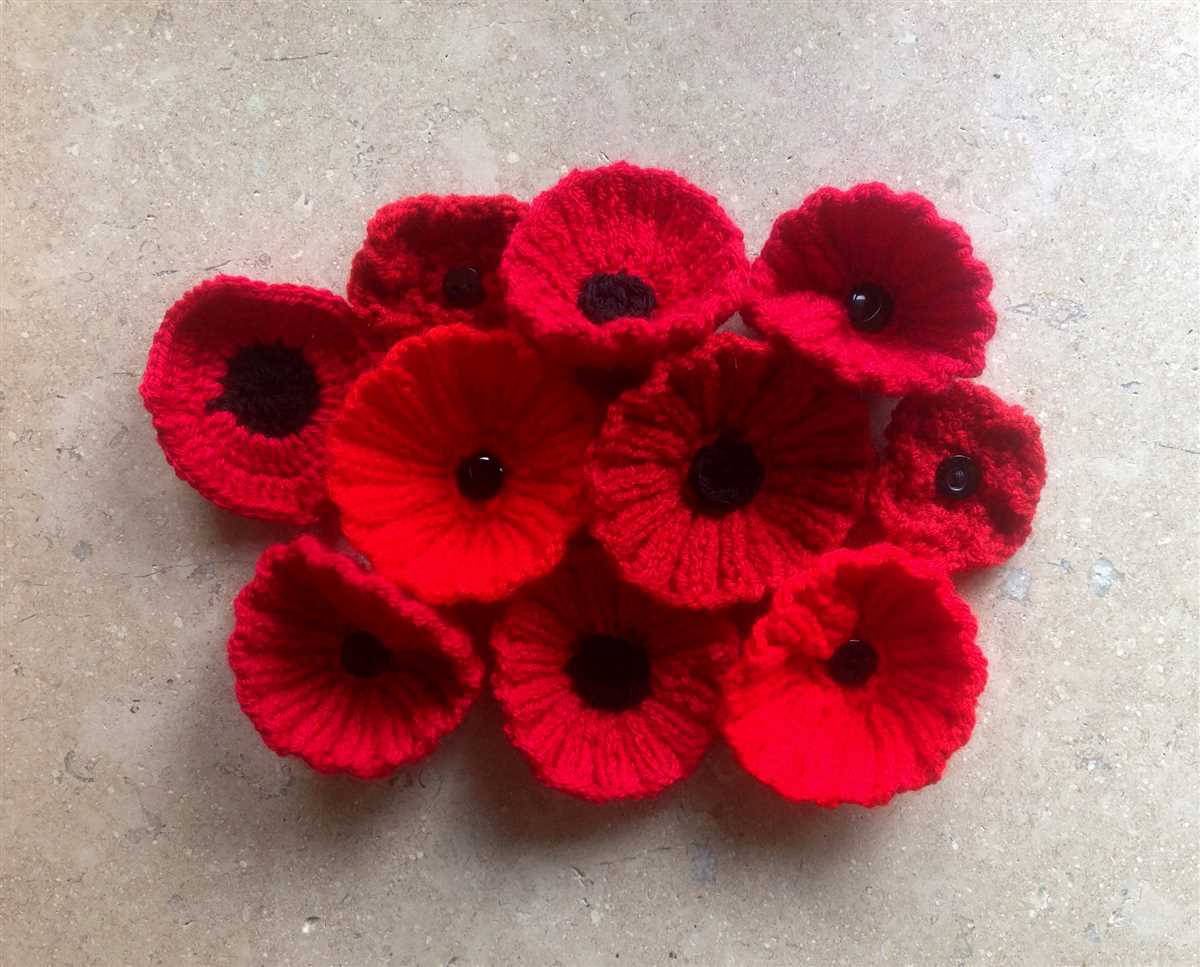
Finally, when choosing yarn colors for your poppies, consider the overall aesthetic you want to achieve. Do you want your poppies to look more classic and traditional or modern and artistic? The color choices can greatly influence the overall look and feel of your poppies, so take the time to think about the style you’re aiming for and choose colors that align with that vision.
With these tips in mind, you’ll be able to choose the perfect yarn colors for your poppies and create beautiful knitted flowers that will brighten up any space or project.
Ways to Decorate Knitted Poppies
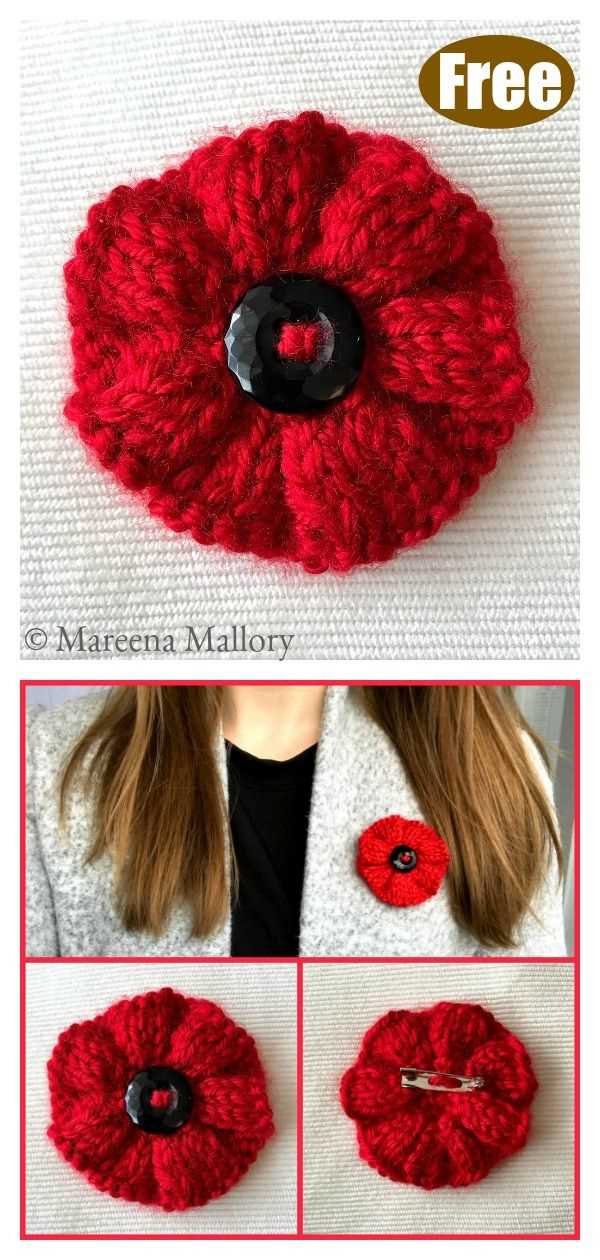
Knitted poppies are a beautiful and meaningful way to show support for veterans and honor those who have served. Once you have finished knitting your poppies, there are many creative ways to decorate them to make them even more special. Here are some ideas to inspire you:
1. Adding Beads or Sequins
One way to add some sparkle and shine to your knitted poppies is by sewing on beads or sequins. You can choose red or black beads to mimic the center of a real poppy, or go for a more colorful approach with different shades. Sequins can be used to create a whimsical effect and catch the light.
2. Embroidery
Another way to enhance your knitted poppies is through embroidery. You can add additional details like veins on the petals or initials on the back of the poppy. Embroidery thread in red or black would blend well with the poppies, or you can choose contrasting colors to make the embroidery stand out.
3. Ribbons or Fabric Leaves
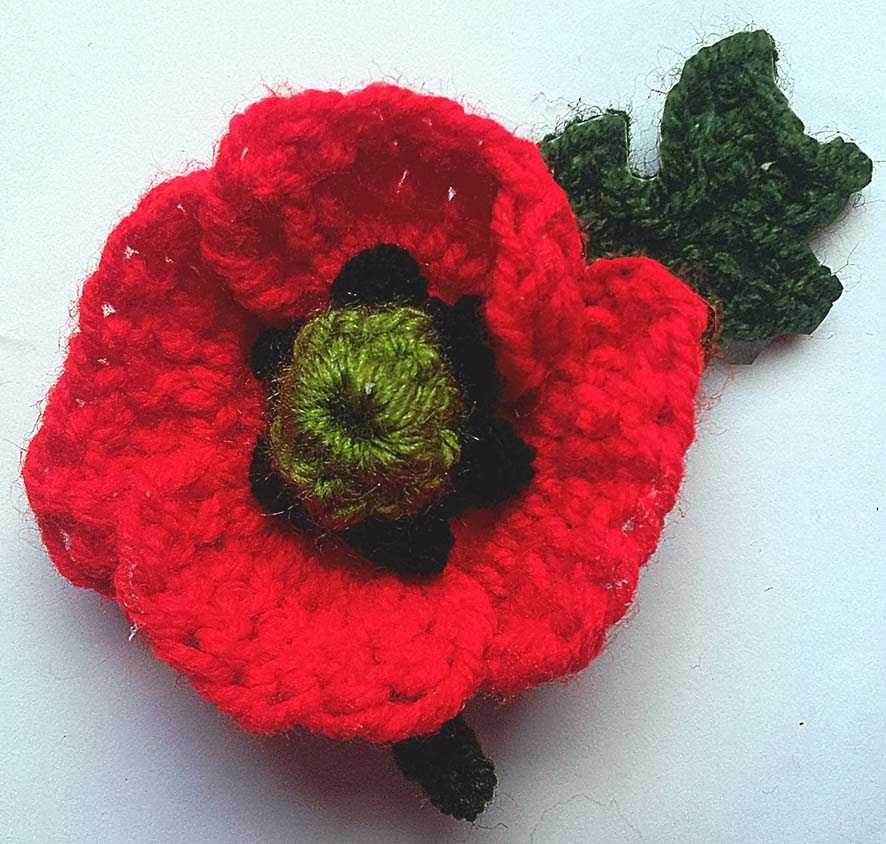
You can attach ribbons or fabric leaves to your knitted poppies to give them a more realistic look. Use a green ribbon or fabric to create leaves and attach them to the stem of the poppy. You can also tie a ribbon around the stem or attach a small bow to add an elegant touch.
4. Buttons
Buttons can be a fun and unique way to decorate your knitted poppies. Choose buttons in colors that complement the poppy or use buttons with patriotic designs, such as the Union Jack. Sew the buttons onto the center of the poppy or along the stem for an eye-catching detail.
5. Displaying in a Wreath or Bouquet
After decorating your knitted poppies, you can display them in a wreath or bouquet to create a beautiful arrangement. Attach the poppies to a wreath base made of foam or wire, or arrange them in a vase with other flowers. This will make a striking centerpiece or decoration for any occasion.
Remember, the most important thing is to enjoy the process and show your support for veterans. Get creative and have fun with your knitted poppies!
Different uses for knitted poppies
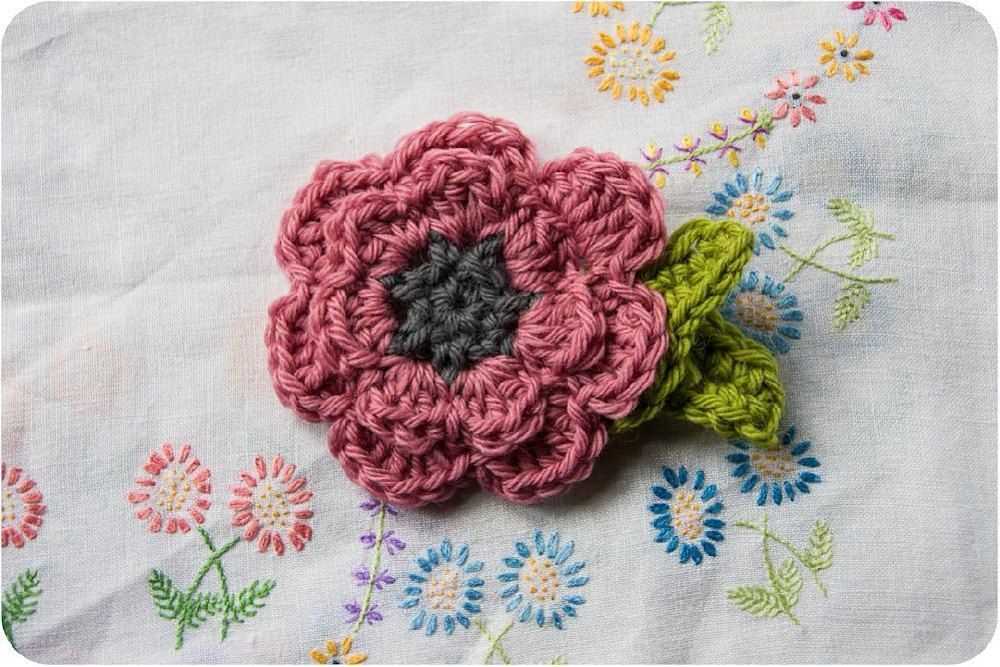
Knitted poppies are versatile and can be used in various ways to honor and remember those who have served in the military. These handmade knitted flowers are not just limited to being pinned on clothing or worn as a brooch, but can also be incorporated into different crafts and decorations.
1. Wreaths: Knitted poppies can be used to create beautiful wreaths as a tribute to fallen soldiers. These wreaths can be displayed on doors, walls, or even used as a centerpiece for a memorial service or event. The vibrant red color of the poppies adds a meaningful and striking touch to any wreath.
2. Memorial quilts: Knitted poppies can be sewn onto quilts to create a touching and unique memorial piece. The poppies can be scattered throughout the quilt, representing individual soldiers or can be arranged in a specific pattern to honor a particular military unit or group. This creates a beautiful and meaningful way to remember and honor those who have served.
3. Memorial gardens: Knitted poppies can be used to create a memorable and meaningful display in a memorial garden. The poppies can be attached to stakes and placed throughout the garden, creating a vibrant and poignant tribute. These knitted poppies can also be paired with real or artificial flowers, adding an extra layer of beauty and symbolism.
4. Fundraising items: Knitted poppies can be used as fundraising items to raise funds for veterans’ organizations and charities. These poppies can be sold individually or incorporated into other items such as keychains, bookmarks, or magnets. The proceeds from these sales can go towards supporting veterans and their families, providing much-needed assistance and support.
5. Art installations: Knitted poppies can be used in art installations to create impactful and thought-provoking displays. These installations can be used to raise awareness about the sacrifices made by the military or to provoke discussions about war, peace, and remembrance. The texture and handmade nature of these knitted poppies add an extra layer of depth and emotion to these installations.
- Knitted poppies offer a versatile way to honor and remember those who have served in the military. They can be used in wreaths, quilts, memorial gardens, fundraising items, and art installations.
Knitting poppies for charity
Knitting poppies for charity is a wonderful way to give back and show support for various causes. Whether it’s to raise funds for veterans, honor the memory of fallen soldiers, or contribute to a charitable organization, knitting poppies can make a meaningful difference.
Why knit poppies for charity?
Knitting poppies allows you to use your creative skills to make a tangible impact. These beautiful knitted flowers can be sold or donated to raise money for charitable causes. By participating in this craft, you contribute to a larger movement and help raise awareness for important issues.
How to get involved
There are numerous ways to get involved in knitting poppies for charity. Here are some ideas:
- Join a local knitting group or charity organization that knits poppies.
- Look for online communities or social media groups dedicated to knitting poppies for charity.
- Contact local schools, churches, or community centers to inquire about poppy knitting initiatives.
- Consider organizing your own poppy knitting event or fundraiser.
The impact of your knitting
Every poppy you knit can help make a difference. Your efforts can contribute to raising funds for important causes, supporting organizations that provide assistance to veterans and their families, or helping to spread awareness and remembrance.
Remember that every poppy created and donated is a symbol of hope, gratitude, and support. Your knitting skills can help make a positive impact on individuals and communities in need.
Join the movement and start knitting poppies for charity today!